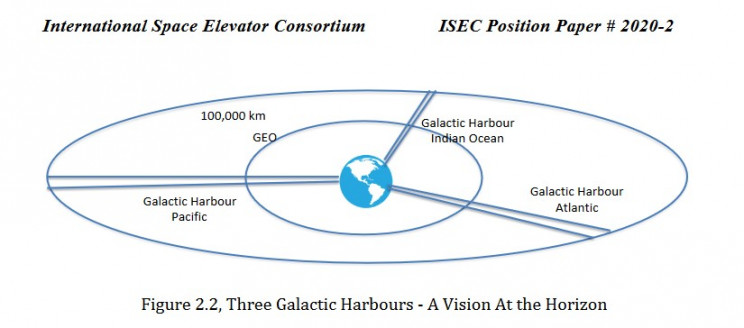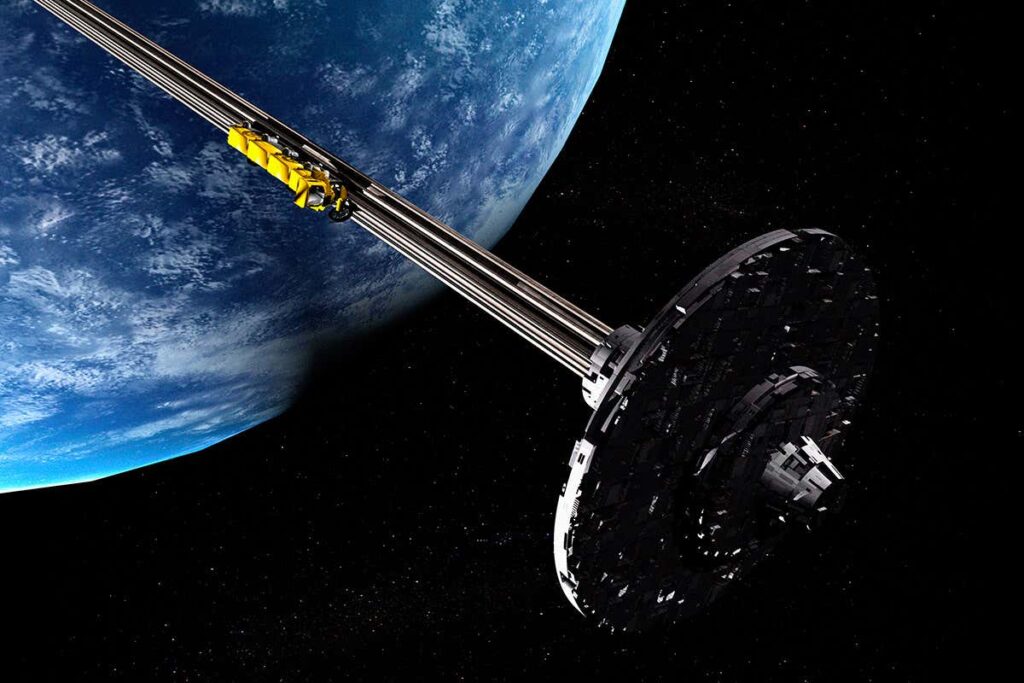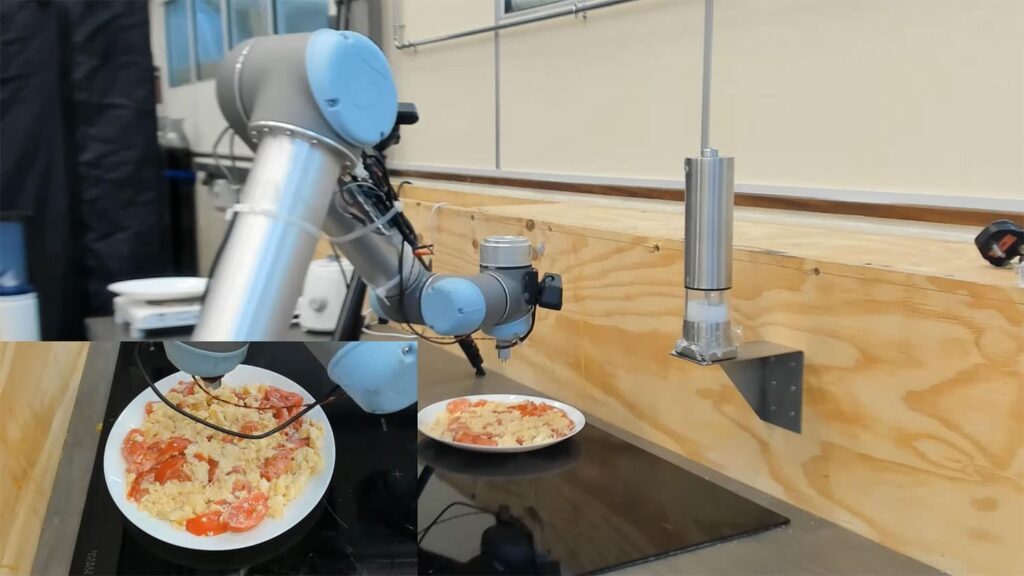Have you ever wondered about how fast the world is changing in terms of science and technology! The feat is profound in transportation with launches of self-driving cars, flying cars, supersonic jet, hyperloop and even space-tour by Virgin Galactic. Forget of those space-tour, supersonic-jet, hyperloop and flying cars, as these researchers had a hushing work on space-elevators for more than 2 decades of time, elevators to carry people and cargo to the space – something that’s gonna be reality in our future, the team of researchers claim.
Space Elevators – What does it mean?
As clearly gettable by the name itself, space elevators are one of the scientists’ biggest dreams of all time, an ideology of having taaaalllllll elevators that would take people from earth to space.
The core of the concept would be a cable anchored to the surface of the earth and extending into space. The design would permit vehicles to travel along the cable from a planetary surface, such as the Earth’s directly into orbit, without the use of large rockets. An earth-based space elevator consists of a cable with one end attached to the surface near the equator and the other end in space beyond geostationary orbit at an 35,786 km altitude.
History and its Challenges
Space elevators traces its origin back to 19th Century when a Soviet rocket scientist Konstantin Tsiolkovsky imagined of a structure that reached all the way to geostationary orbit after he had a visit to Paris’ Eiffel Tower, followed by a Soviet Engineer Yuri Artsutanov proposed a practical version of bringing home the space elevators, by suggesting that a station be deployed in GSO and a tension structure be deployed downward. This “tether” would connect the station to the surface and allow for payloads to be lifted into orbit using very little energy compared to conventional rockets.
Similar concept was proposed by four American engineers in 1966, who concluded for a suspension structure that would pull the lift up to the space, in the name of ‘Sky-Hook’.
Since then, uplifts are seldom seen in this domain, as the design which called for a befitting material for megastructure base and a suspended cable connecting the base and space were untold. The choice of material for constructing it, was such a knot since the tall elevator cables insisted on a solid material that is both strong requiring at least 100 Gigapascals (180 times of Steel) to withstand the stresses involved and simultaneously light. These halted the process for decades until the third decade of 21st century.
Space Elevators

As researchers were keen on examining the solution of space elevators, graphene was the hand out being the most potential material suitable for the application. Graphene, an allotrope of carbon consisting of single layers of atoms arranged in a honeycomb lattice nanostructure was considered an impossible material until a few years ago, told Adrian Nixon, a Chartered chemist, member of the Royal Society of Chemistry.
The National Graphene Institute (NGI) does the basic scientific research, the Graphene Engineering Innovation Centre (GEIC) does the applied research and turns the science into technology and then helps bridge ‘the valley of death’ for taking the technology and helping it scale up to become industrially commercial”, said Nixon.
Over time, new techniques emerge that can produce single-crystal graphene in sheets centimeters in scale, not just in microns, via a method called chemical vapor deposition (CVD) in 2009. However, CVD – though low-cost and scalable, couldn’t combat with the required production of graphene in large scale. About a decade later, graphene has reached the point where kilometer-scale continuous graphene fibers can be produced – MIT Researchers’ roll-to-roll technique proved so. The technique created large sheets of graphene at a rate of around 6.5 feet (2 meters) per minute. What’s more, when made as single-crystal sheets, graphene has a tensile strength of around 130 GPA or 236 times as strong as steel.
A futuristic treat for Space
The potential benefits of a space elevator are numerous and profound. According to a study conducted by the University of Colorado, the cost of sending payloads to space using a Space elevator could be as little as $250 per kg, which is five to ten times cheaper than what it costs to send payloads and crews to space today, using modern reusable rockets.
Read this: Solar Panel in Space might soon beam Electricity to Earth – Scientists tested!
Not stopping with that, space elevators are significantly cheaper (about seventy-four times) than what it cost to go to space between 1970 and 2000, using traditional rocket launching systems.

The overall architecture the ISEC is envisioning (called the “Galactic Harbor”) goes beyond the creation of a single Space Elevator, though. “Space Elevators are the Transportation Story of 21st Century”, the title of the ISEC position paper in 2020 entails that their plan is to install a family of six elevators built in pairs in three locations around the planet, each pair in Atlantic Ocean, Indian Ocean and the Pacific Ocean. This architectural infrastructure paves the way for space transportation enabling interplanetary travel by the second half of the century.
Benefits of Space Elevator
The details of this architecture were spelled out by Dr. Swan and his colleagues in a 2020 ISEC position paper titled “Space Elevators are the Transportation Story of 21st Century.” Among the benefits they cite, a Space Elevator would:
- Enable endless opportunities for commercial enterprises, research, and travel
- Move 170,000 MTs of cargo a year to Geostationary Earth Orbit (GEO) and beyond
- Enable the creation of space stations at GEO, Lagrange Points, and beyond
- Allow for rapid transit to orbit (7.76 km/sec) routinely, safely, and robustly
- Allow fast transit to Mars (minimum of 61 days to 400+ days)
- Allow missions to launch for Mars every day (not just every 26 months)
- Create no rocket exhaust or contribute to global warming
- Not add any additional space debris
You should read this! Satellites can 3D-print itself in Space – Giving birth to Space Manufacturing
Space Elevators are Eco-friendly too!
With the growth of the commercial space sector and renewed interest in space exploration, countries like the U.S., China, India, and others are hoping to drastically increase the number of launches per year they conduct. Meanwhile, visionaries like Elon Musk and Jeff Bezos are proposing major projects (building a city on Mars, habitats in space, etc.) that would require thousands of launches per year.
Perhaps, Space elevators proffers to reduce the carbon emissions into the atmosphere, since cutting down a single rocket launch could prevent 300 tons of carbon dioxide into the sky. In 2018 alone, a total of 900 million metric tons of carbon dioxide got deposited in the atmosphere, a report describes.
Other “green” aspects of this technology are the way it will practical creation of technology like space-based solar arrays. For some time, scientists have considered this to be one of the most promising means to combat global warming. By being able to lift heavy payloads to orbit for pennies on the dollar and without depositing tons of carbon in the atmosphere, Space Elevators could also help solve the climate crisis.






